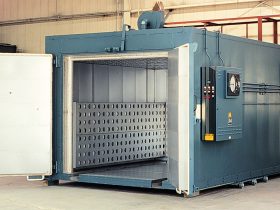Confluence software uses spaces to help users organize their work and workflows. These global spaces are site areas where any type of content whether it is news, pages, or attachments can be placed. Each space follows a specific theme hence there many separate areas on the software where each project team or individual can communicate their work. Each project, client, or team can set up their dedicated space. They can build content for the spaces separately and then assign membership to the users.
The software also follows the concept of a personal space where individual users are the owners. These spaces are not available on the dashboard and can only be accessed through the directory. Personal spaces can be set up by users when they log in for the first time. They contain pages, news items, and other attachments that can be browsed or searched. Personal spaces can be opened up to the public with viewing and editing rights available to all users similar to global space. Confluence software treats each space like a wiki and they function autonomously within the website.
How to Create a Space
There are no limits on the number of spaces that can be hosted on Confluence software. Users can decide if they want a separate setup for each team or share information in the same space. Every individual space has its own homepage, blog, comments, files, and RSS feeds. They can be customized with different color schemes, logos, and sidebars. The space administrator decides the permission levels and assigns them to different members.
There can also be one over-encompassing space that contains all roadmaps and details regarding the sub-teams. Confluence reviews praise the fact that each team member is assigned a role and the list is available on the space. They can also create a separate space for other departments with dedicated guidelines, long-term goals, and relevant articles shared. Every project can also have its own space and will be linked to the team through labels.
Personal Spaces
The Confluence demo personal space is owned by an individual and it can be used to store their work, help keep track of tasks and update blog posts on what they have been working on. It can also serve as a space where users can improve their work before they transfer it to the site space. Users can set up their profiles by adding a profile picture and other information.
They can also change the permission for the space at any time and determine who can and cannot access the content. Individuals can keep it completely private and use it to share their own work. The individuals need to have permission from the administrators to create their own personal space.
Site Spaces
Teams can create a site space for any project or team that will benefit from having a place where they can work together and store relevant files. These can be set up from scratch or by using the available Confluence software templates. These site spaces can be set up for teams, knowledge databases, or documentation depending on the company.
Creating a space is very easy and users only need to choose the category and enter the details. However, once the space type is selected it cannot be changed later. Every space is automatically assigned a homepage and users can customize it to display the relevant information. Those who are relying on templates can have the space customized and set up for them without making all the effort.
Space Permissions
Every space comes with a default set of permissions and the user responsible for the site space is given the administrative permissions. They are responsible for granting access to users or groups. The admin can edit the permissions at any time and set up the Confluence site whenever they want.
Linking Spaces
Two separate spaces can be linked together with the help of labels and doing so will create a category in the space directory. Each label helps users group the linked spaces together so they can be viewed together. The space description helps visitors locate the right space from within each category.
Navigating all related spaces is easy with the help of the Spaces List Macro. It filters out the results using categories and users can insert their own list of spaces that fall under a specific category. For example, users that want to keep a list of all projects a particular team has worked on then they can link the team space with it.
It is also possible to link only certain Confluence software pages instead of connecting the entire space. Users can choose which information they want to be displayed through the Content Report Table option. They can also use the information to serve as the workplace directory and create a list of all team pages with the user roles and contact details for the entire company displayed on a single screen.
Organizing Spaces
Each space serves as the container for holding important information for any team, project, or group. These are details users need to work together and every space holds pages, blogs, and files. The Confluence reviews mention that spaces provide overviews similar to pages and have a dedicated shortcuts sidebar too. People can navigate their way around the space with the help of this menu.
Organizing Pages
The space contains multiple pages and they can be used to create a hierarchy of all the information. There are nested pages that branch out from a parent page and are categorized under them. Pages help organize related information by assigning them the same labels. Every Confluence demo space has a blog as well which is useful for making announcements or sharing news.
Blog posts allow people to stay updated on everything going on in the team or project. They are not specifically arranged in space but can be ordered according to their date. Creating a post will make them appear in the Blog sidebar and users can browse through them to access a specific article.










Leave a Reply